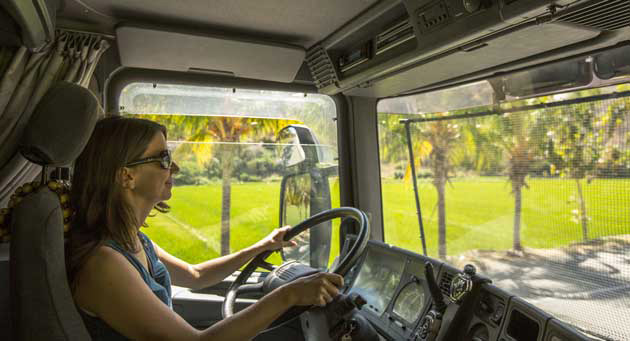
Management can only claim to be properly organized when everything is running according to schedule and is on track
An organization has many faces. Some see it as having a kind of agenda or a manual for specified work processes with dos and don’ts, a clear and step-by-step procedure that just needs to be followed so that everything follows its course, smoothly, without any major hassle, everything nice and straightforward. Others see it as a bureaucratic construct with strict hierarchies, a rather inconvenient set of guidelines you have to follow, and if you don’t, you’re in trouble. Both these viewpoints are a somewhat simplistic way of looking at things. Every well-functioning company needs an organizational structure – one that is goal- and solution-oriented. It has to be solid, with logical, unbureaucratic processes, and it provides sufficient freedom for collaborative thinking and taking personal responsibility within clearly defined guidelines. The aim of it all is to carry out projects efficiently and successfully.
An interview with Irene Aeppli in 2018, Project Management and Consulting at n c ag, Urdorf – Thomas Gysin
Coming to work each morning already knowing how the day will proceed is somehow reassuring, you start off with no stress, you’re more efficient and you enjoy your work. Areas of responsibility are clearly assigned, and the objective and timetable are set. This is especially important in a team because you can then assume that you can rely on everyone involved. However, this requires smart project management.
Efficient time management shouldn’t come at the expense of quality and safety.
More precise project organization comes with a need to operate with greater awareness, carefully planning each individual step. It is a misconception to believe that tight time frames and seamless interconnections are always compatible with an efficient approach. Even the slightest delay in a single step can trigger a chain reaction and force subsequent steps to go too fast. This jeopardizes quality and safety, and makes the susceptibility to errors incalculably high. Good organization incorporates safety margins in terms of time so that these can be mobilized when required, but don’t necessarily have to be. This ensures that quality and safety are always guaranteed, even if the process doesn’t run smoothly, and that the project is completed on time. With a smooth work process, on the other hand, less effort is required, time is saved and a correspondingly more efficient result achieved.
Work processes need formulating in an intelligible way and must follow an understandable logic.

Responsible planning involves the individual people in charge and assigns them their own areas of responsibility. This is particularly important in order to prevent what would otherwise be crippling bureaucracy from arising in work processes in the first place. Employee skills and the personal responsibility associated with them also foster quality and efficiency in each individual work step, and boost appreciation and respect for employees’ own work and the team as a whole. The basis for this is a mission formulated in a way that is comprehensible to everyone involved, and also logical performance benchmarks.
You have to understand everyone involved first before asking them to understand you.
Only robots can work at the push of a button. But even for that, you also need the right person in the right place who finally presses the right button. These people first have to understand how it all works. This is vital to taking a joint approach. This might sound a bit ordinary, but it’s an oft-ignored basic premise for well-functioning management. To make it sound more like a typical teacher maxim: You have to talk to each other, listen to each other and want to understand each other. Only then can good cooperation and efficient project implementation in a team be achieved.
If project management is well organized, you can start talking about having done a “nice job”.
Yes, and you sleep better, feel fit and are in a good mood again the next day (laughs) – in the end, all that counts is that the job is done well and delivered on time. The added bonus, though, is that everyone involved enjoys the work. And that the customer also gets something out of this enjoyment. By the way, being well organized is no science; it takes common sense, a positive attitude to work and a bit of sporting ambition. You also need to be able to draw up a clear work plan and explain complex issues in simple and understandable terms. For the team, you’re not just the person in charge and a controller, you’re first and foremost the contact person who backs people even when things don’t go according to plan.


Irene Aeppli, Project Management and Consulting
Irene Aeppli originally apprenticed as a typographer, later went on to study as a typographic designer, and alongside her role as project administrator and manager at n c ag, she also was in charge of the apprentices. After 16 years with n c ag, Irene Aeppli took time out in 2015 to go around the world. She and her husband first traveled through Canada in a four-wheel-drive 15-ton truck and then from Alaska to the bottommost tip of South America. After this major trip, the two traveled to Japan and New Zealand. In 2018, Irene Aeppli returned to n c ag in a project management and consulting role.
